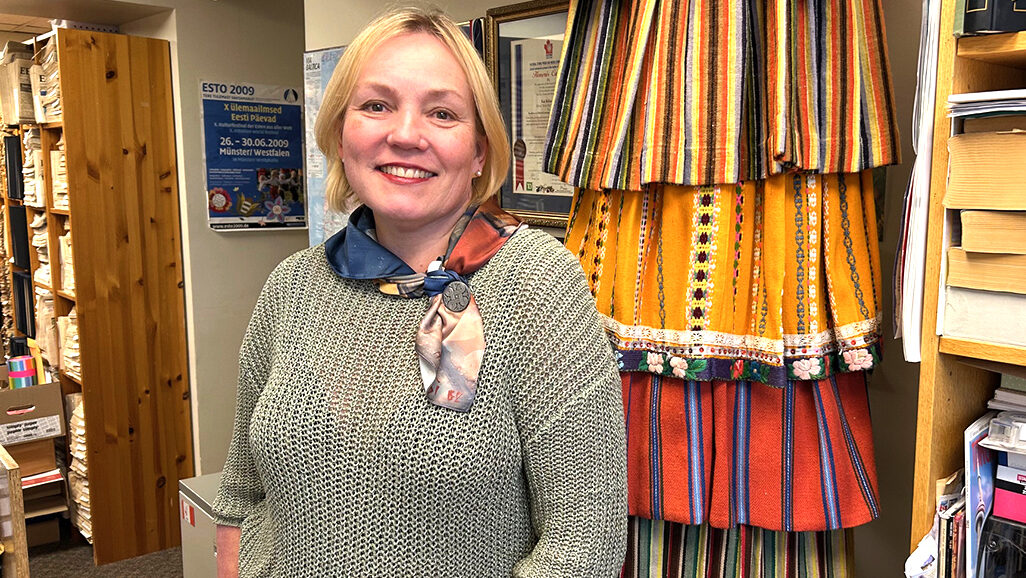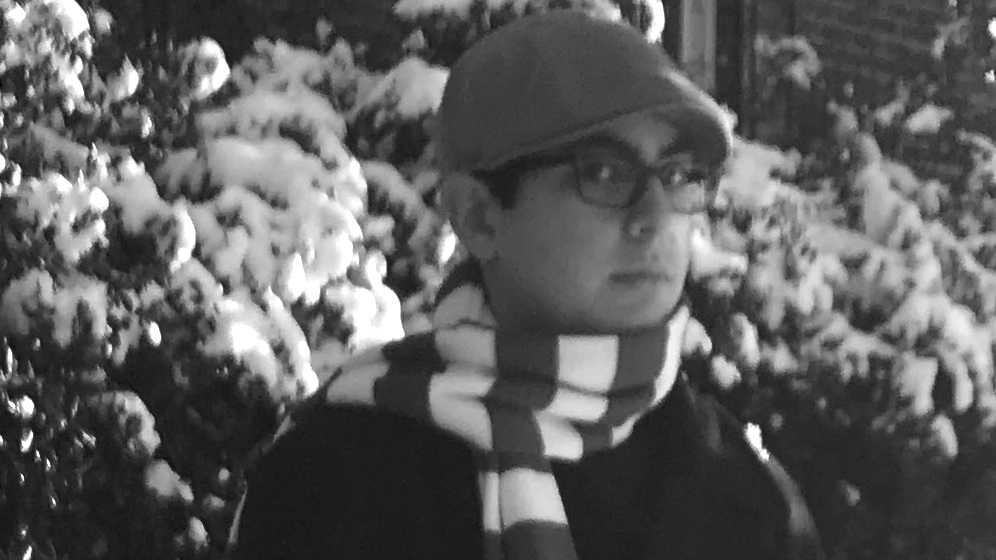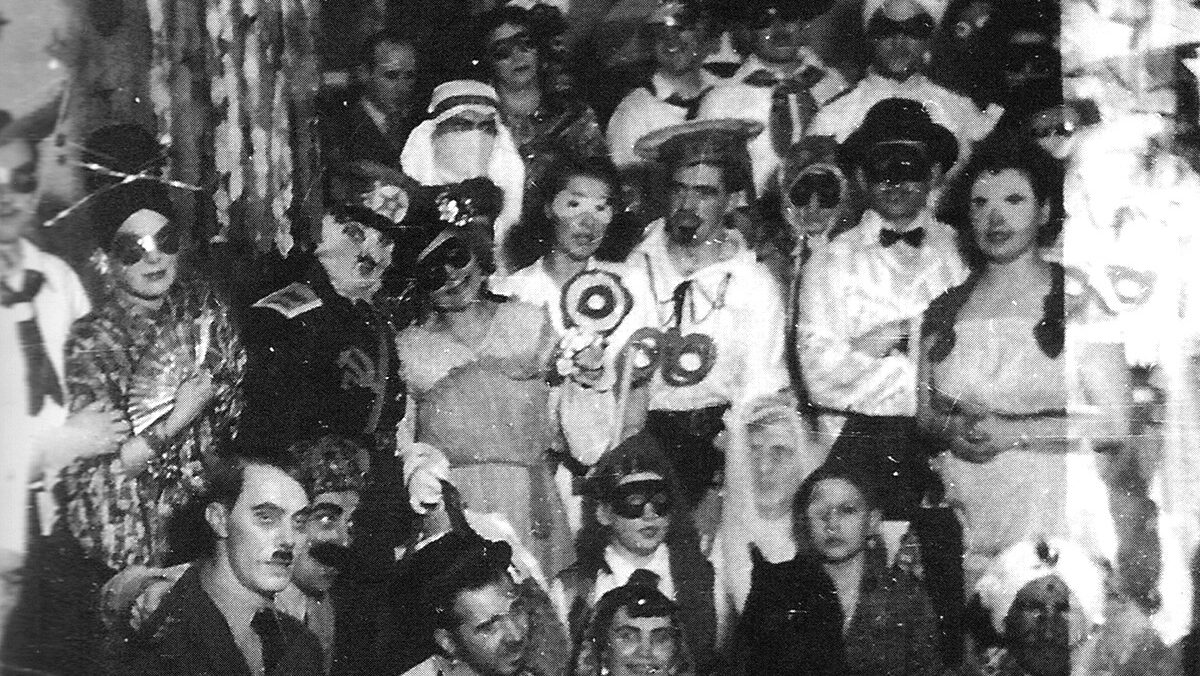I suspect it’s hereditary and connected to the traumas endured by my Estonia parents, and their parents and the nation that they belong to.
My parents were forced from their homes and homeland in 1944 – carried away in the arms of their parents, fleeing not by choice but to escape violent Russian Soviet era repression and colonization.
The previous Russian occupation of Estonia in 1941 had already delivered its verdict. My paternal grandfather was sent to the Gulag. Others in our family and their neighbours – arrested for the supposed crimes of being entrepreneurs, teachers, members of local councils, or for simply attending a church or synagogue. Stalin’s terror had a bureaucratic efficiency: if you had a mind of your own, you were marked for elimination.
What we’ve witnessed over the past three years, in Ukraine, Bucha and Mariupol – torture, rape, and the calculated destruction of entire communities – these are not new Russian innovations. They are macabre traditions. They are inherited tools of Russian neo-imperialist conquest, sharpened and passed down through generations.
My paternal grandparents owned a farm near the coast in western Estonia, a few hundred meters from the departure point for thousands of refugees escaping across the Baltic Sea.
During the first Soviet occupation, tens of thousands of Estonians were arrested, deported, or executed. The German Nazi occupation that followed claimed thousands more – including members of the Jewish community who remained after the Soviets targeted them. When the Soviets returned in 1944, few were willing to gamble their families lives on a second round of Russian “liberation”.

My paternal grandparents owned a farm near the coast in western Estonia, a few hundred meters from the departure point for thousands of refugees escaping across the Baltic Sea. Their farm became a brief resting place for many fleeing the second brutal, Russian occupation.
Among the refugees was a group of Estonian patriots – leaders of the resistance against both Nazi and Soviet occupiers. They formed the National Committee, the last legal representatives of Estonia’s pre-occupation government. In the dark of night, they Otto Tief was empowered to lead the government as Prime Minister, and declared the restoration of Estonia’s independent government, producing the official documents that would later become the foundation of Western non-recognition of the Soviet annexation.
Those documents needed to escape with them to ensure the world knew of Estonia’s sovereign decision. Tief took them west, fleeing with his cabinet to the coastal village near my family’s farm. There, in a Baptist prayer house built by my grandfather and his brothers, Tief’s government held its final session.
This legacy – the forced exodus, the resistance, the preservation of truth in exile – isn’t just history. It’s family memory. It’s the spine of my moral compass.
Then, in the cold dark of a September night, both the members of Tief’s government and my family joined the exodus – rickety boats overloaded with hope and desperation, pushing off into a churning sea toward Sweden. Some would never make it, swallowed by the waves or destroyed by Soviet submarines patrolling the coast.

Through some miracle, my grandparents and parents made it. Otto Tief was among those who did not. Before he could find a boat in the stormy seas, he was captured by the Soviets and thrown into the notorious Patarei Prison – a grim symbol of Soviet repression that today stands as a museum; a place where the air itself still seems to whisper reminders of terror and resistance. Yet Tief’s suitcase, heavy with their declarations and proof of Estonia’s sovereignty, made it to Stockholm. Those papers would be used to justify the West’s refusal to recognize the Soviet annexation of the Baltics.
This legacy – the forced exodus, the resistance, the preservation of truth in exile – isn’t just history. It’s family memory. It’s the spine of my moral compass. And it’s why, when I hear the hollow justifications of tyranny or the apologetics of Kremlin aligned Western and indeed Canadian chauvinists, I cannot remain silent.
Because justice isn’t abstract when your family is terrorized because of their cultures and langue, and when your grandparents built the very room where Estonian democracy made its final stand before the darkness closed in. And freedom isn’t just a slogan when it had to be smuggled across the sea in a suitcase.
It was in Halifax that fate, seated my maternal and paternal and grandparents – complete strangers – together in the same train booth bound for Toronto. I’m told that my grandfather’s got along well, sharing cigarettes and stories along the way. That singular coincidence marked not only the beginning of their new lives in Canada, but the first fleeting intersection of my parents’ lives, as young children, unknowingly sharing the same carriage. Years would pass before they would meet again, this time with memory, purpose, and history on their side.
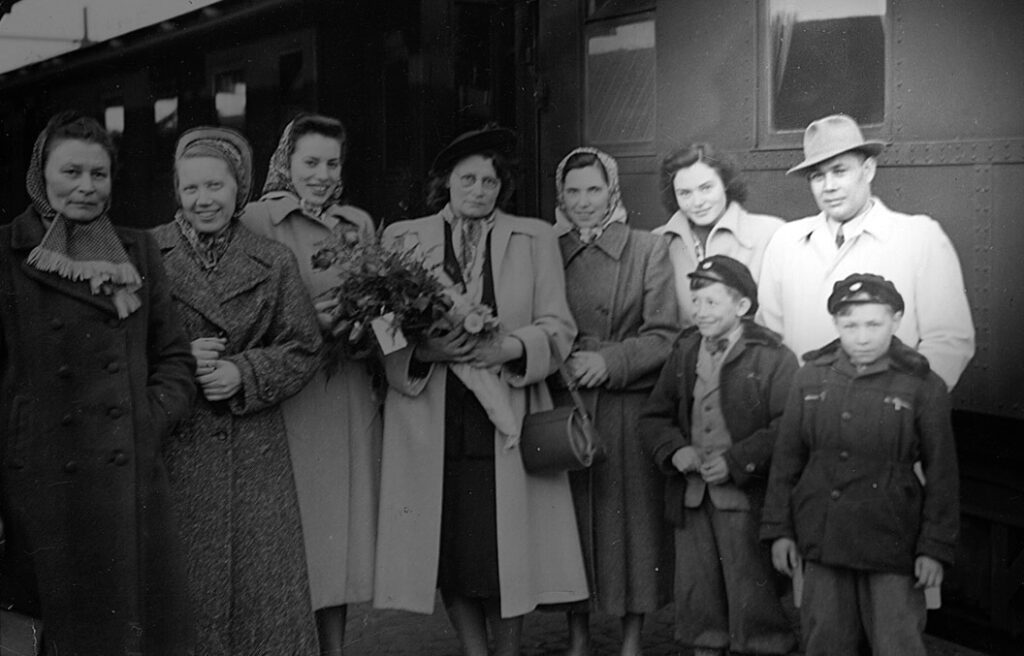
In Toronto, they faced the chauvinistic Anglo-Saxon sneer of postwar ignorance – taunted and dismissed as “DPs,” displaced persons, as if their survival itself were some kind of stain. The slurs and condescension were painful for them, especially my father. The shame that his teachers and classmates tried imposed on him became unbearable. So, he did what many refugees are forced to do to survive: he erased a part of himself and his identity. “Aare” became “Dave”. The Estonian boy who escaped tyranny had to shed his name just to be allowed a chance at belonging.
They had lost everything but their values. And it was with those – honesty, hard work, and the stubborn refusal to surrender – that they rebuilt.
They began their new lives in Canada with little more than dignity, determination, and the scars of what had been taken from them. My mother’s father, once a seasoned merchant marine based in London, had returned to Estonia to invest his hard-earned savings in two small cargo ships to run trade between Baltic ports. The Soviets seized both – no compensation, no explanation. Along with his ships went his farm, his home, and the dreams he had built from saltwater and sweat. In Toronto, he started again – this time as a labourer, eventually working as a janitor at the Workers’ Compensation Board.
My grandmothers found work in the garment factories of Toronto, joining the quiet army of immigrant women who stitched new lives out of threadbare circumstances. My paternal grandfather, whose homeland had been reduced to ash and barbed wire, rose again – this time as a construction foreman, helping to build the city where his family could finally live free of fear.
They had lost everything but their values. And it was with those – honesty, hard work, and the stubborn refusal to surrender – that they rebuilt.
Meanwhile, in Estonia, the Soviet regime intensified its campaign to erase the nation’s language, culture, identity and its soul. Historical memory was rewritten or buried. Any flicker of hope for freedom was smothered under layers of disinformation, surveillance, mass arrests and fear.
What the Kremlin sold to the West as “liberation” was, in truth, a brutal colonization – violent, relentless, and utterly devoid of respect for human dignity. Where Canadian troops helped liberate the Netherlands, restoring democracy and aiding in its national rebirth, Soviet forces did the opposite. It was not merely occupation, but infection. A political cancer, metastasizing through Central and Easter Europe, killing every nation it touched with its tradition of conquest, murder, rape, and cultural annihilation.
The Estonian farmers, teachers, businessmen, labourers – men and women alike – who dared to resist the Soviet re-occupation of their homeland were mercilessly hunted by Stalin’s regime. Branded as enemies for defending their homes and families, they were targeted for extermination – not just physically, but culturally and spiritually. Anyone suspected of harbouring nationalist sentiment or opposing Soviet rule, regardless of age, status, or innocence, was arrested, deported or worse.
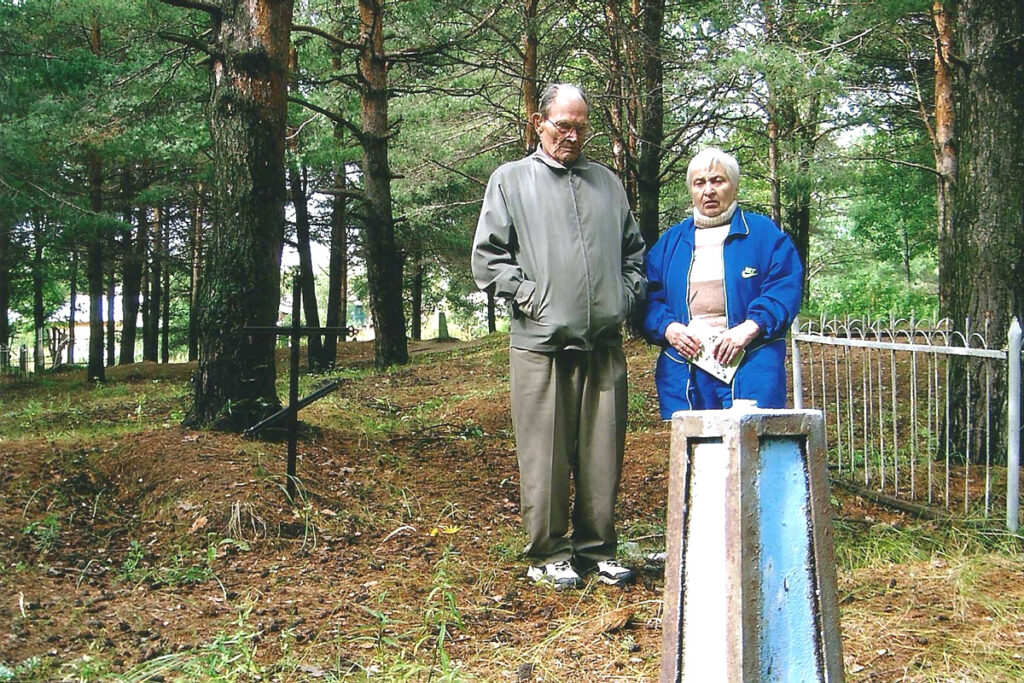
In March 1949, the Moscow launched one of its most sweeping operations of ethnic cleansing. Across the Baltics, Belarus, and Ukraine, hundreds of thousands of people were torn from their homes and communities and sent to remote forced labour camps in Siberia and beyond. Seventy percent of those deported were women and children – the most vulnerable, targeted precisely because they carried the cultural future of their nations.
Russia’s grotesque obsession with children has never ended. In Ukraine today, over 20,000 children have been abducted by Russian forces – ripped from their families and transported to indoctrination camps deep inside Russia. There, their knowledge of Ukrainian language is eliminated, their names changed, and their identities deliberately erased. In their place, a synthetic Russian identity is imposed.
While these crimes unfolded in Europe, Estonians in Canada were quietly organizing. In the early 1950s, our community began building institutions that, at first, were intended to be temporary measures to preserve language and culture until Estonia was free again. Estonian language schools were set up in church basements. Folk dancers practiced in community halls. Churches were constructed not only for faith, but for survival – cultural, spiritual, and communal. Children's camps were built to support families when their kids were on summer break.
Canada’s policy of non-recognition of the Soviet occupation remained a vital source of hope – for Estonians abroad and those still living under occupation.
Alongside this, political advocacy became a central mission. Estonian exiles worked tirelessly to raise awareness about the grim conditions endured by their compatriots behind the Iron Curtain. The fight for Estonian freedom – “vabadus” – was a core value in every Estonian family in Canada, the U.S., Australia, Sweden, and elsewhere.
But advocacy came at a cost. The Soviet embassy in Ottawa closely monitored and targeted diaspora communities. Estonian, Latvian, Lithuanian, and Ukrainian leaders were persistently smeared as “neo-Nazis” simply for opposing Soviet occupation. The slur was applied indiscriminately, a hallmark of Soviet disinformation that continues today under Vladimir Putin – where anyone who challenges Russian imperialism is branded a fascist, regardless of truth or facts.
Canada’s policy of non-recognition of the Soviet occupation remained a vital source of hope – for Estonians abroad and those still living under occupation. The decision by the Canadian government not to recognize the Soviet annexation proved foundational. It was made possible thanks to Otto Tief and his colleagues, who documented the legal continuity of the independent Estonian state. That foresight would again matter greatly nearly half a century later.
The first glimmer of renewed freedom emerged in the late 1980s. As Gorbachev’s policies of glasnost and perestroika loosened Moscow’s grip, the air in the Baltics began to shift. Western music and ideas – once forbidden – had already started seeped into Estonia via shortwave radio in the late 1960’s. From the Beatles to the Sex Pistols, the sound of Western rebellion became a cultural lifeline for young Estonians desperate to break free of Soviet monotony. Meanwhile, news broadcasts from Voice of America and the BBC pierced the Iron Curtain, offering a beacon of truth.
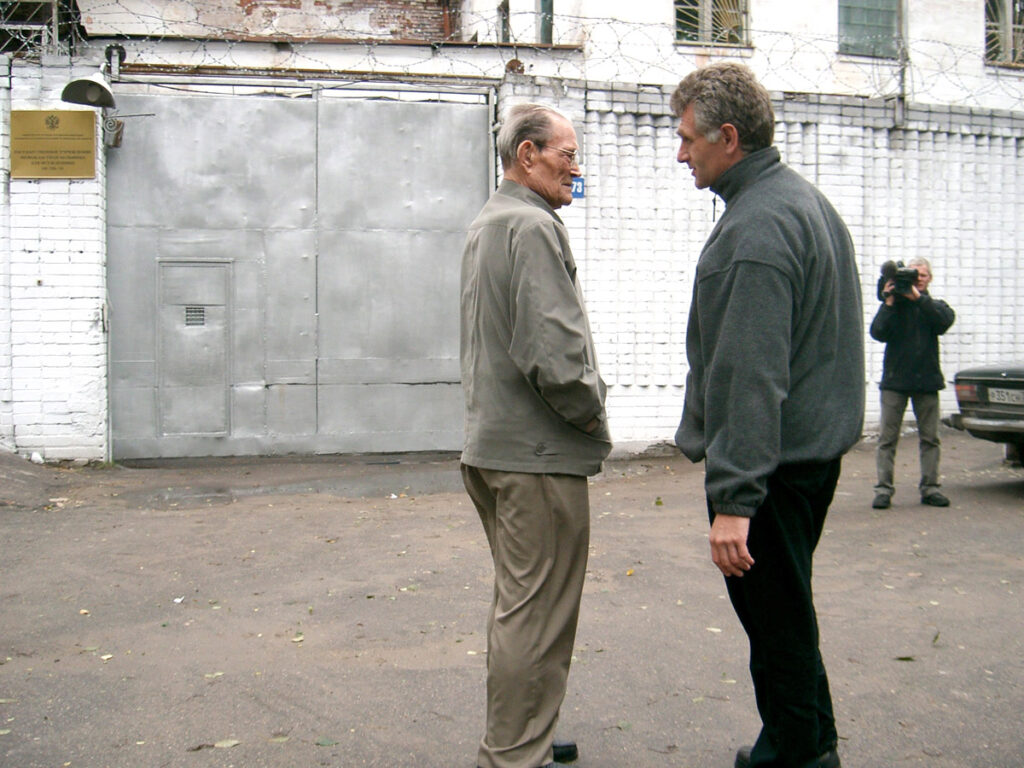
My uncle was the literal voice of America – anchoring the VOA Estonian Service throughout the 1970s and 1980s. On visits to Washington, I would always stop by the VOA studios, just steps from Capitol Hill. The Estonian exile journalists who worked there were driven by a clear mission: to bring truth and hope to a nation held captive. Their work – anchored in moral clarity and a deep sense of purpose – left a lasting impression on me as a young person. It inspired not only admiration, but a sense of responsibility that has never faded. Parenthetically, this is why it is so difficult to comprehend Donald Trump’s decision to gut both Voice of America and Radio Free Europe/Radio Liberty – institutions that have long served as lifelines to those living under violently repressive regimes. Even today, under the suffocating weight of Putin’s Russia and Xi Jinping’s surveillance state, these platforms continue to deliver truth where it is most endangered.
The first tests of Gorbachev’s liberalization came through culture. In all three Baltic states, large-scale music festivals and patriotic gatherings swelled with support. In Estonia, the movement became known as the Singing Revolution – a peaceful, cultural uprising that awakened national consciousness. By the summer of 1988, over 300,000 Estonians gathered at the Song Festival Grounds in Tallinn, singing anthems of freedom and defiance. It was a mass expression of national identity that could not be ignored.
In September 1988, Estonian leaders – emboldened by public support – began to openly speak of independence. That fall, Estonia’s Supreme Soviet declared the supremacy of Estonian law over Moscow’s. Latvia and Lithuania quickly followed with similar declarations. Emboldened by the hope of freedom, in August 1989, two million people formed a human chain across the three Baltic states in the now-legendary Baltic Way – a peaceful, 600-kilometre demonstration of unity and resistance.
For young Estonian Canadians like me, this was a moment of awakening. What had once seemed like a remote dream – freedom, independence, national restoration – was suddenly within reach. The years spent in Estonian schools on Broadview Avenue, the summers spent with friends at camps, the language, culture, and community we had preserved in exile – now had a purpose. And they would become the bridge connecting us to the nation and culture our families left behind in 1944.
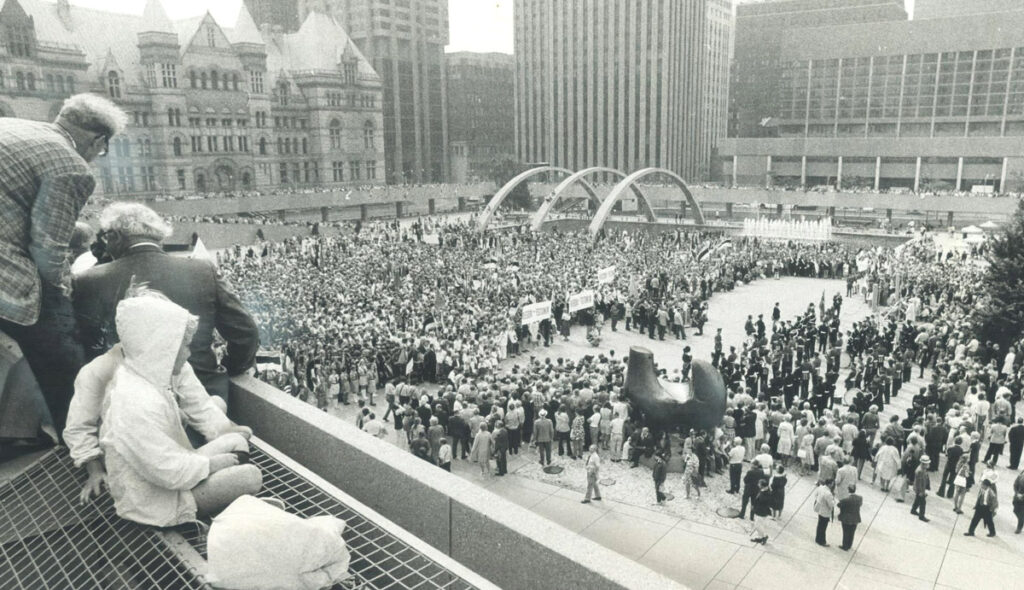
In 1990, just before the Soviet collapse, a group of us traveled to Tallinn to participate in the national song and dance festival. I was privileged to be among them. The anticipation in the air was electric, but so was the tension. Soviet soldiers were still everywhere. One night, after a spontaneous concert of freedom songs in Tallinn’s Old Town, a Canadian friend of ours was detained by the KGB and interrogated overnight. He was released in the morning, shaken but unharmed. It was a reminder that freedom had not yet been secured – and that danger still lingered.
Even as the Baltic nations and Ukraine hurdled toward sovereignty, not all in the West stood with them. President Reagan had helped weaken Moscow’s grip, but his successor, George H.W. Bush, viewed the disintegration of the Soviet Union with apprehension. His administration hired Henry Kissinger to advise Gorbachev on how to hold the empire together. For the sake of “stability,” Bush was willing to overlook the democratic aspirations of millions.
In January 1991, Soviet tanks rolled into Lithuania to crush its independence movement. Between January 11 and 13, Soviet troops opened fire on peaceful demonstrators. Fifteen were killed, over 700 injured. Outrage swept through Central and Eastern Europe – but the Bush administration remained largely silent.
Then, in August 1991, a failed coup by hardline Soviet and KGB leaders accelerated the unraveling of the empire. Latvia and Estonia seized the moment, formally declaring their renewed independence. Lithuania, which had already done so the year before, stood with them.
Iceland was the first Western nation to recognize the restored Baltic independence – but recognition from the United States and the G7 would be critical to ensure sovereignty was respected. True to form, President Bush hesitated.
That’s when Canada stepped forward.
On August 26, 1991, Prime Minister Brian Mulroney arrived in Kennebunkport, Maine, for a scheduled visit with President Bush. As Mulroney later wrote in his memoirs, he informed the President that Canada would immediately reestablish diplomatic relations with Estonia, Latvia, and Lithuania. Bush objected. Mulroney stood firm. The people of the Baltic nations had waited too long, fought too hard and suffered too much. He would recognize their independence – publicly, at their joint press conference.
Thanks to the legal continuity preserved by Otto Tief’s government, Mulroney didn’t need to recognize anything new. Canada had never stopped acknowledging the sovereignty of Estonia, Latvia, and Lithuania. All that was required was the formal reestablishment of diplomatic ties, which is exactly what Mulroney did.

Mulroney’s courage emboldened the rest of the G7 – and forced Bush to follow suit just weeks later. What followed with the disintegration of Russia’s Soviet era colonial repression and domination over millions of people – thanks to Canada’s leadership.
For Canadians of Baltic descent, this represented the ultimate triumph – a culmination of decades of sacrifice, tireless activism, and an unwavering faith in freedom's eventual victory. It was an achievement that belonged not just to elected officials, but to the community activists, educators, journalists, camp leaders, and countless others who refused to forget their roots and never surrendered their belief in liberty.
But today, the freedom that was stolen for 50 years, and reclaimed for the past three decades, is once again under threat. A neo-imperial regime in Moscow – led by a man who openly idolizes Stalin and his violently repressive neo-imperialist traditions – is waging war on Ukraine and once again threatens the sovereignty of the Baltic nations.
The return of Soviet era imperialism, repression, and military aggression poses a direct threat to the entire democratic world. The danger is not theoretical – it is present and real.
The disinformation narratives that Vladimir Putin has used to discredit, dehumanize and incite hate towards Ukrainians around the world, have been adopted by Canadian pro-authoritarian extremists to intimidate and silence Canadians of Estonian, Latvian, Lithuanian and Ukrainian heritage. In one deeply disturbing case, a Canadian far-left publication – which is inexplicably funded by the Canadian government – accused all of these communities of being “enemies” of Canada for opposing Russia’s Soviet era colonization – endorsing its colonial policies and ethnic cleansing.
This is not just a regional issue. The return of Soviet era imperialism, repression, and military aggression poses a direct threat to the entire democratic world. The danger is not theoretical – it is present and real.
This year, as Estonians from around the world will convene in Tallinn for the Song and Dance Festival, the celebration of 30 years of independence will be shadowed by that looming threat. And by another sobering reality: the retreat of the United States from its long-held role as a global defender of democracy.
Estonia’s remarkable resilience against all efforts to erase its sovereignty and eliminate its unique identity over the past hundred years, along with Latvia and Lithuania, should stand as a beacon of hope for other nations, facing similar threats – including those that Canada is now facing.
They stand as a reminder, that we can never afford to remain silent and must never surrender in the face of existential threats.
History has not ended – and democracy and our collective freedom are once again, on the line.
